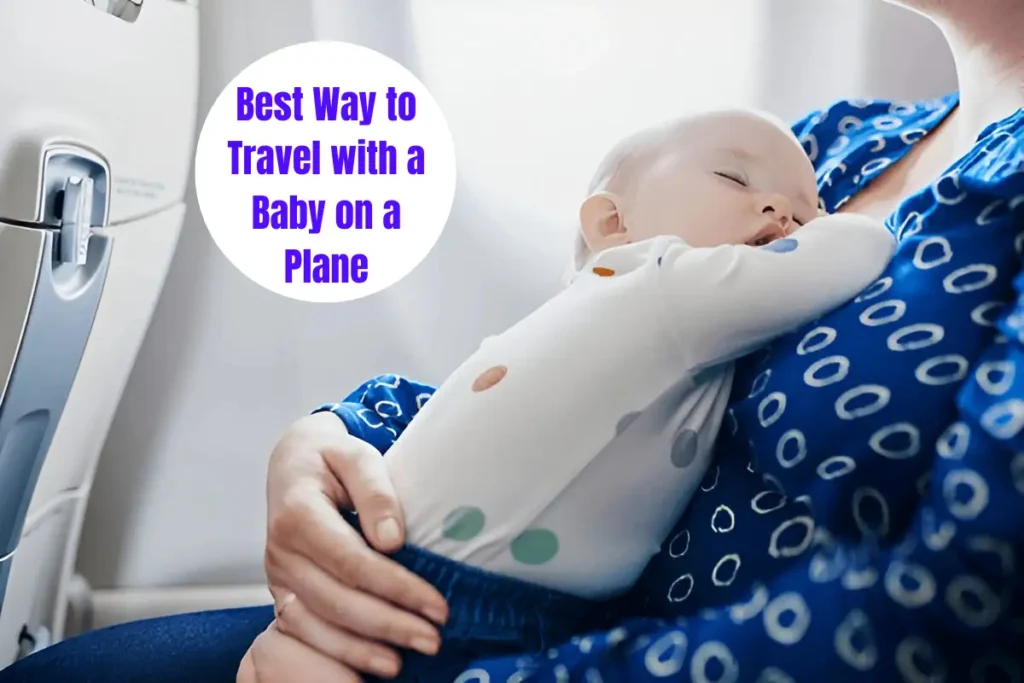Traveling with a baby can feel overwhelming, but with the right preparation, it can be a smooth and stress-free experience. Whether you’re a first-time parent or a frequent flyer, this guide will help you navigate air travel with your little one like a pro. From booking the right flight to handling in-flight challenges, we’ll cover everything you need to know for a seamless journey. So, let’s explore the best way to travel with a baby on a plane.
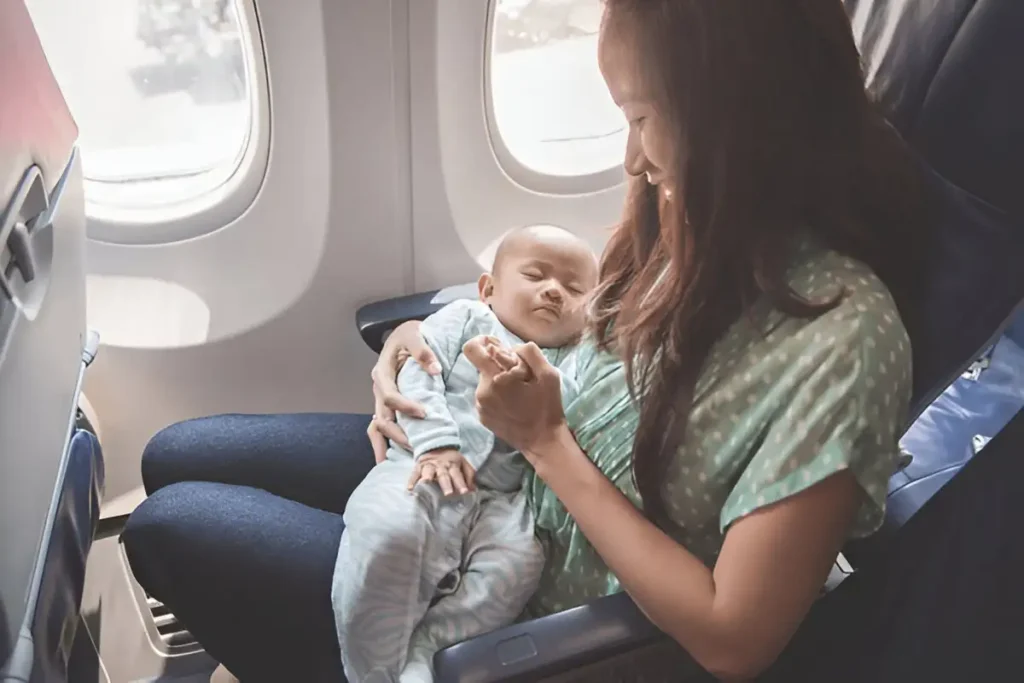
Best Way to Travel with a Baby on a Plane
1. Plan Ahead for a Stress-Free Flight
Preparation is key when flying with a baby. Here are some crucial steps:
Book the right flight: When possible, pick nonstop flights to reduce on the way flights. For longer trips, flying during naptime or overnight can be helpful. Pick airlines that have a reputation for family friendly services.
Check airline policies: Each airline has specific rules regarding which baby gear you can carry to baggage, even amenities on the plane. Some operators permit car seats; others require lap sitting for children younger than two. Don’t forget to check about luggage allowances and restrictions on bringing formula, diapers and baby food.
Select the best seats: Bulkhead seats offer more space, and some airlines provide bassinets. And if you’re traveling with a partner, you might consider buying an aisle and window seat the middle one is likely to remain empty. Aisles seats make it easy to walk up and down and soothe a cranky baby.
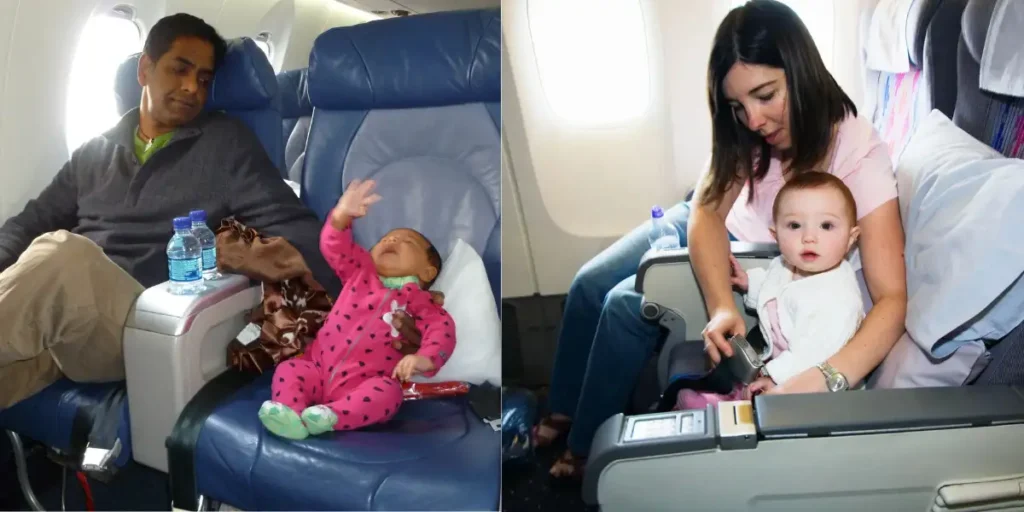
2. Packing Essentials for Your Baby’s Comfort
Traveling with a baby can be one of the most rewarding yet difficult things to do. Whether you’re off for a short road trip or a long-haul flight, packing the perfect diaper bag can make all the difference in keeping your little one comfortable and you worry-free. Here is a complete packing guide for best way to travel with a baby on a plane.
- Diapers and Wipes: Pack enough diapers to last the entire journey, including potential delays. A good rule of thumb is one diaper for every hour of travel, plus a few extras. Don’t forget wipes — not just for diaper changes, but also for hand, face and surface cleaning.
Tips: Pack a few diapers in easy-to-reach places, like the outer pocket of your diaper bag, for quick access during emergencies.
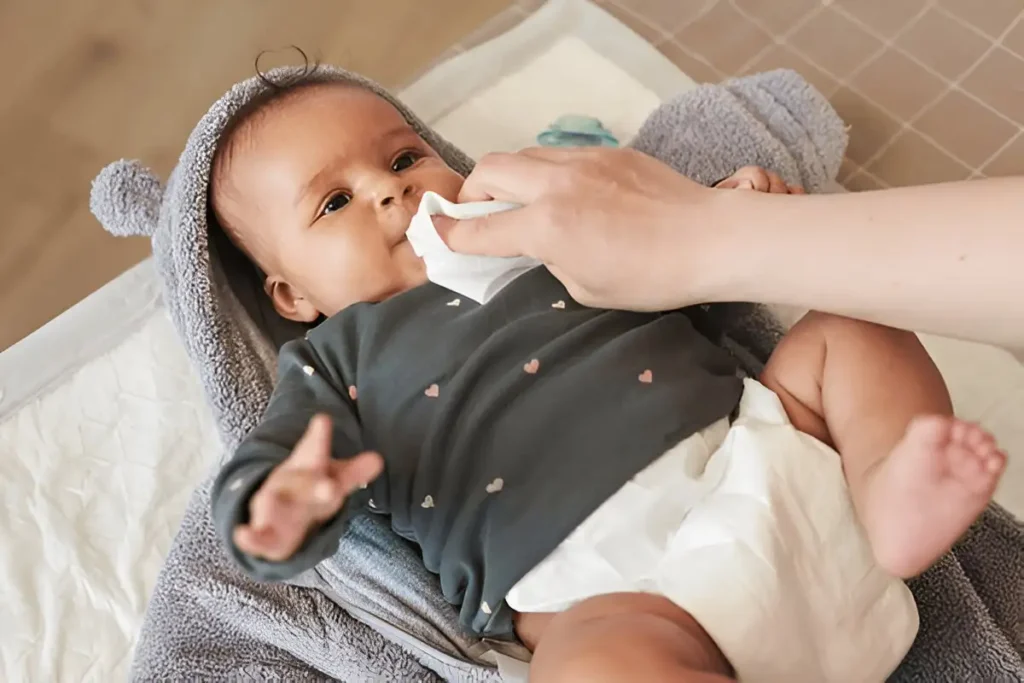
- Change of Clothes: Accidents happen! Whether it’s diaper blowouts or surprise spills — so always pack a change of clothes for an infant, as well as a parent. Bring easy, comfy outfits that slide on and off and clothes you can layer to suit all temperatures.
- Feeding Essentials: If your baby is on a bottle, bring enough formula, bottles and a portable bottle warmer, if using one. Many airports feature family-friendly nursing rooms for breastfeeding mothers. Don’t forget bibs and burp cloths to keep messes under control.
TSA tip: The Transportation Security Administration (TSA) permits reasonable amounts of baby formula, breast milk, and baby food in carry-on luggage. Tell security officers at the checkpoint and be ready for additional screening.
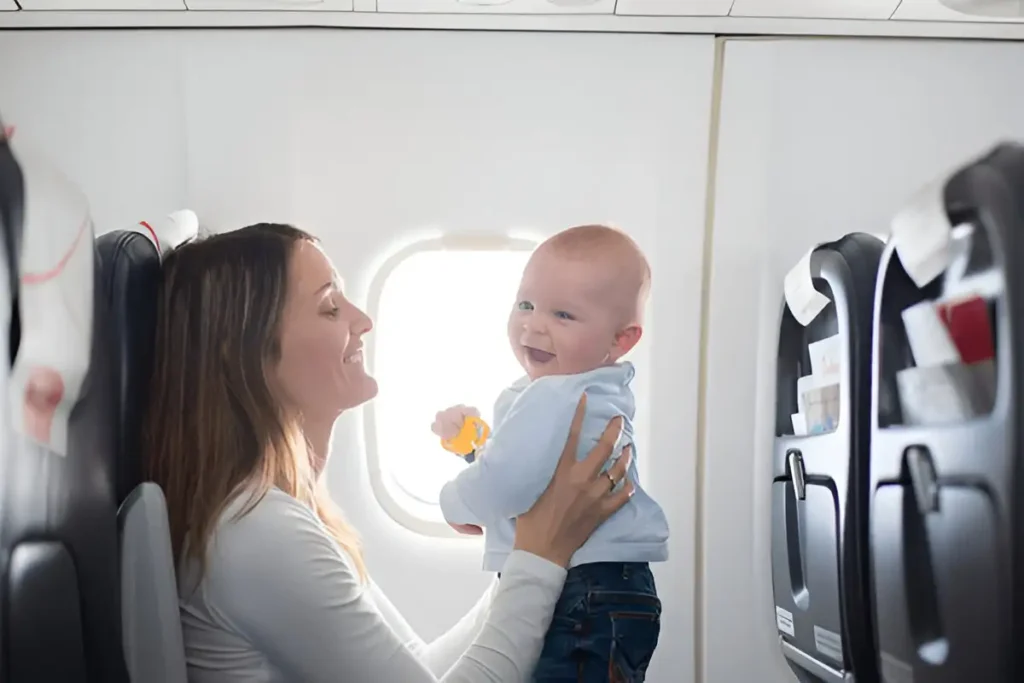
- Toys and Entertainment: Keep your baby engaged with their favorite toys, books, or comfort items. Small, lightweight toys that don’t make too much noise are ideal for public spaces. You could also download baby-friendly apps onto your phone or tablet or find videos.
- Blanket and Pacifier: A comforting blanket may keep your toddler cozy, and a pacifier is helpful to relieve ear pressure as the plane takes off and lands. Familiar objects can also provide comfort for your baby in unfamiliar places.
- Snacks and Teething Biscuits: For older babies, pack easy-to-eat snacks and teething biscuits. Snacks can be a great distraction during long waits and help keep your baby content.
- Hygiene Essentials: Pack cleaning wipes and hand sanitizer to disinfect surfaces, such as airplane trays, armrests and changing tables in public restrooms. A portable changing pad helps keep diaper changes more sanitary, in close quarters or in less-than-sterile surroundings.
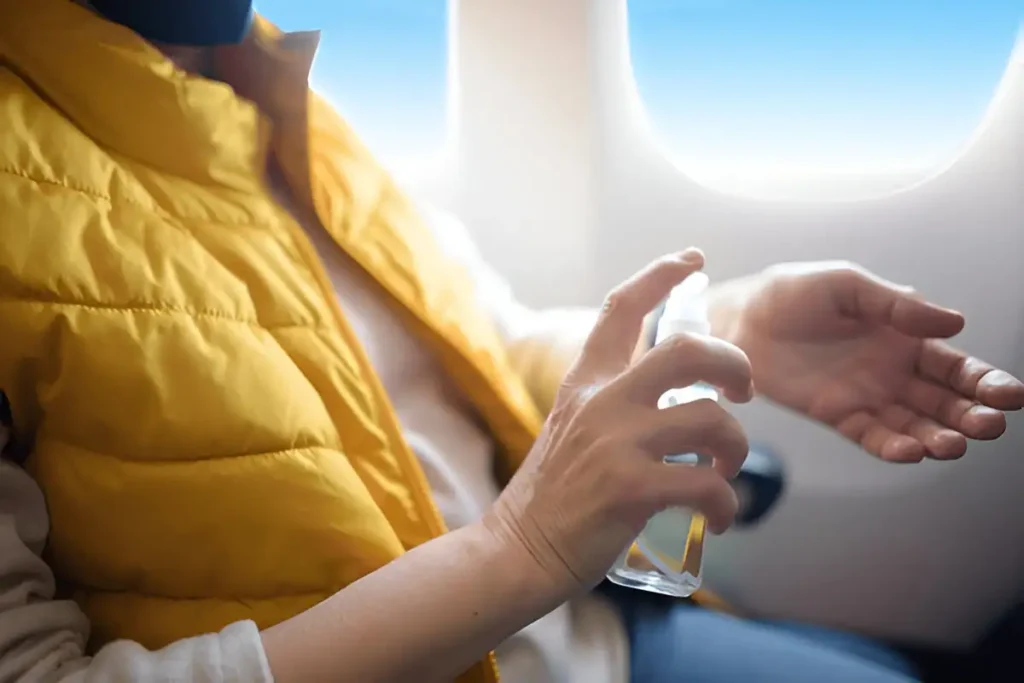
- Plastic Bags for Dirty Items: Pack a few plastic or reusable wet bags for storing dirty diapers, soiled clothes, or used wipes. This helps contain messes and keep the rest of your bag clean.
- Baby Medications and First-Aid Kit: Always carry a basic first-aid kit with items like infant pain relievers, teething gel, band-aids, and any prescribed medications. If traveling internationally, carry a doctor’s note for prescription meds so that there are no issues at customs.
3. Best way to travel with a baby on a plane: Managing In-flight challenges
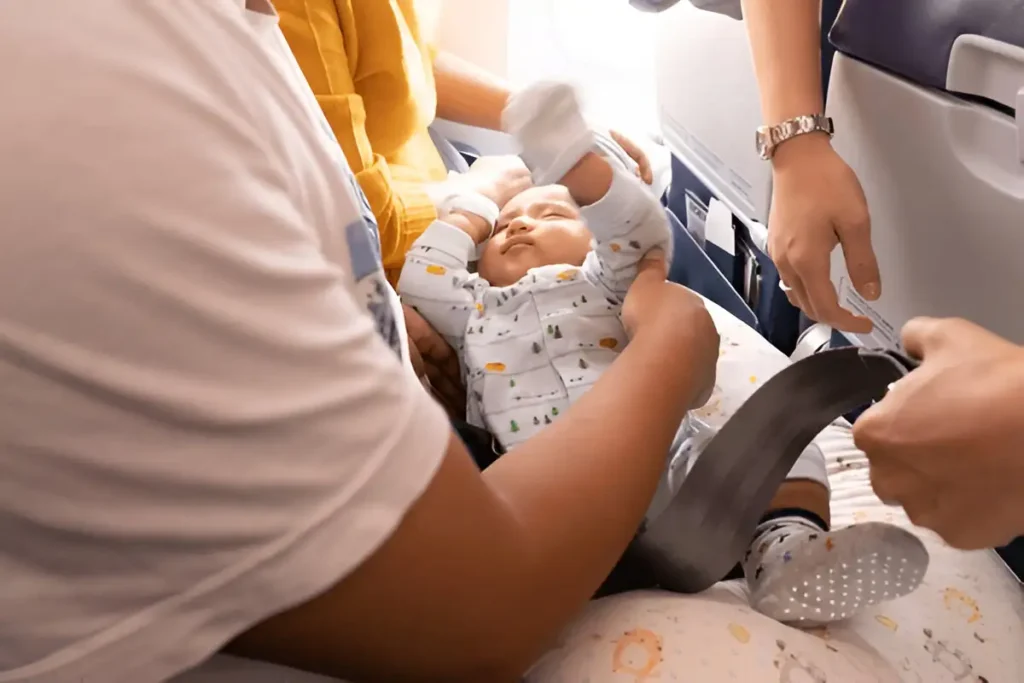
- Feeding during takeoff and landing: Breastfeeding, bottle-feeding, or using a pacifier can relieve ear pressure and keep your baby comfortable. Feeding also provides comfort and helps babies settle in.
- To handle fussiness: As able by walking around the cabin, distract baby with plush or soft toys, even try a few gentle songs to help soothe them. Movement is often a great way to soothe babies to sleep.
- Diaper changes: Use airplane lavatories that have changing tables. Pack disposable changing pads and extra diapers. A small plastic bag can contain soiled diapers until clean disposal.
- Sleep strategies: Do your best to adhere to your baby’s nap schedule. Pack sleep aids that kids already use at home, such as a favorite blanket, white noise apps, stuffed animals. Younger babies might sleep more soundly when swaddled.
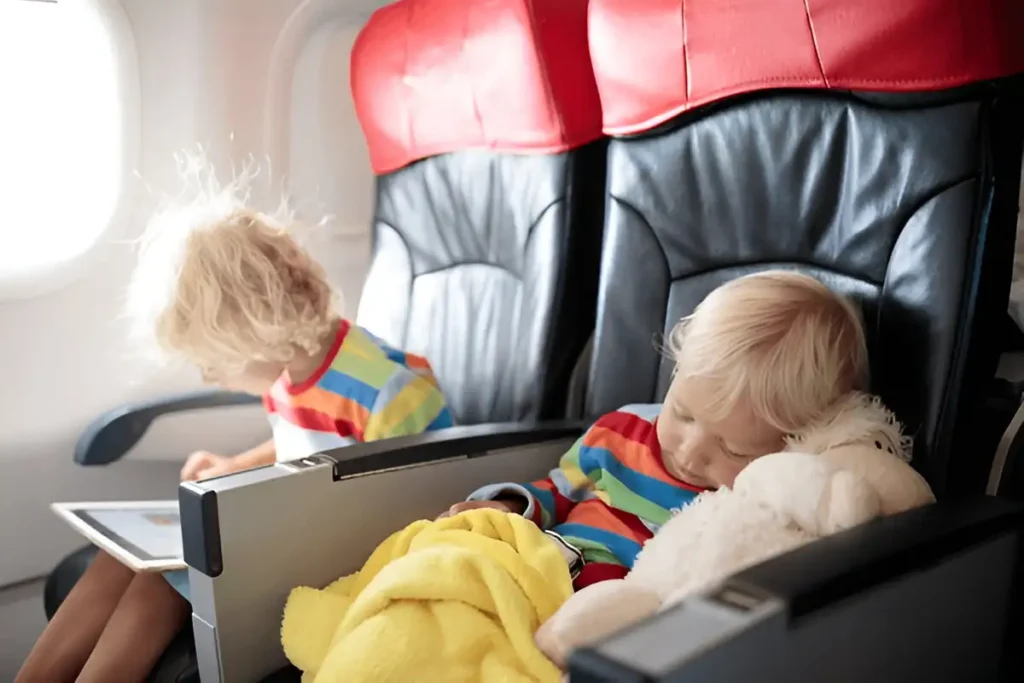
- Dress in layers: Cabins can be cold, so fight that with layers to keep your baby warm. If you find it cold, a hat or socks will add warmth.
Engage with flight attendants: Many flight attendants are willing to assist parents traveling with infants. Don’t hesitate to ask for help when needed.
- Encourage quiet play: Soft toys, sensory books, and fabric activity cubes are great options to keep your baby occupied.
4. Navigating the Airport with Ease
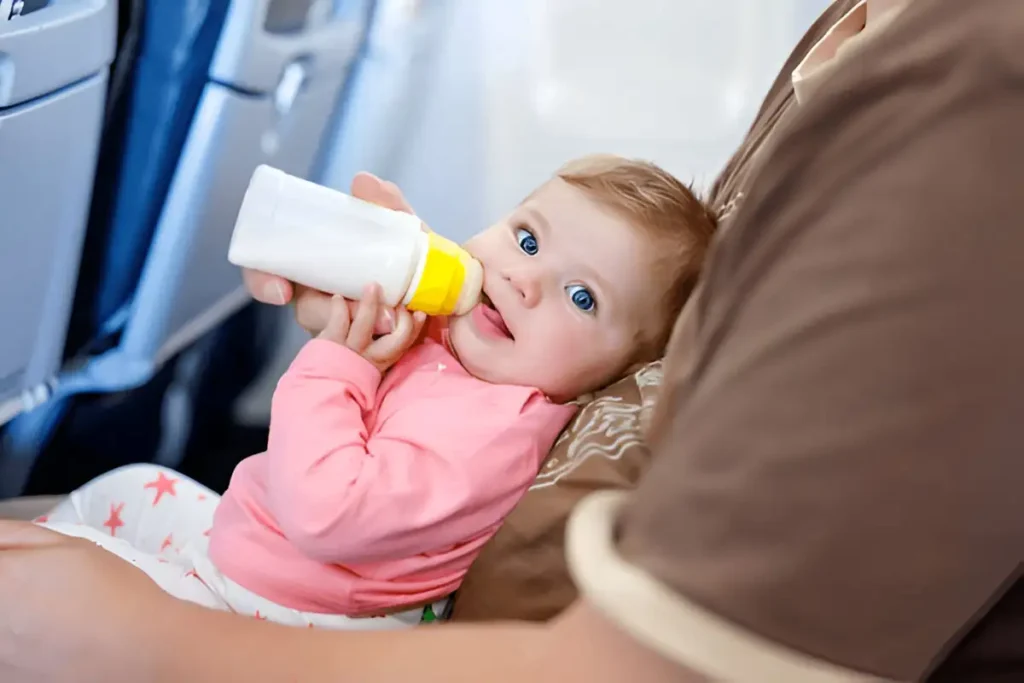
- Arrive early: Allow extra time for security checks and boarding. Airports can be unpredictable, and a relaxed pace helps reduce stress.
- Use a baby carrier or lightweight stroller: This option can keep your hands free while ensuring proper baby comfort. Most airlines will let you check a stroller at the gate, but a carrier may be more convenient during security screenings.
- Take advantage of family boarding: Most airlines allow families traveling with infants to board ahead of other customers, providing extra time to situation everything.
Keep essential documents handy: Have your baby’s passport, birth certificate (if needed), and boarding passes ready for a seamless check-in process. Some airlines require proof of age for lap infants.
Get ready for security: Prepare to extract baby-related items—like formula and liquids—for TSA clearance. Using clear bags can help simplify this process.
Utilize airport lounges: If you have access, family-friendly lounges provide quieter spaces, play areas, and comfortable spots for feeding and napping.
Look for family restrooms: Most airports also have designated family restrooms, so that diaper changes and feeding is a lot more convenient.
5. Common Mistakes to Avoid When Traveling with a Baby
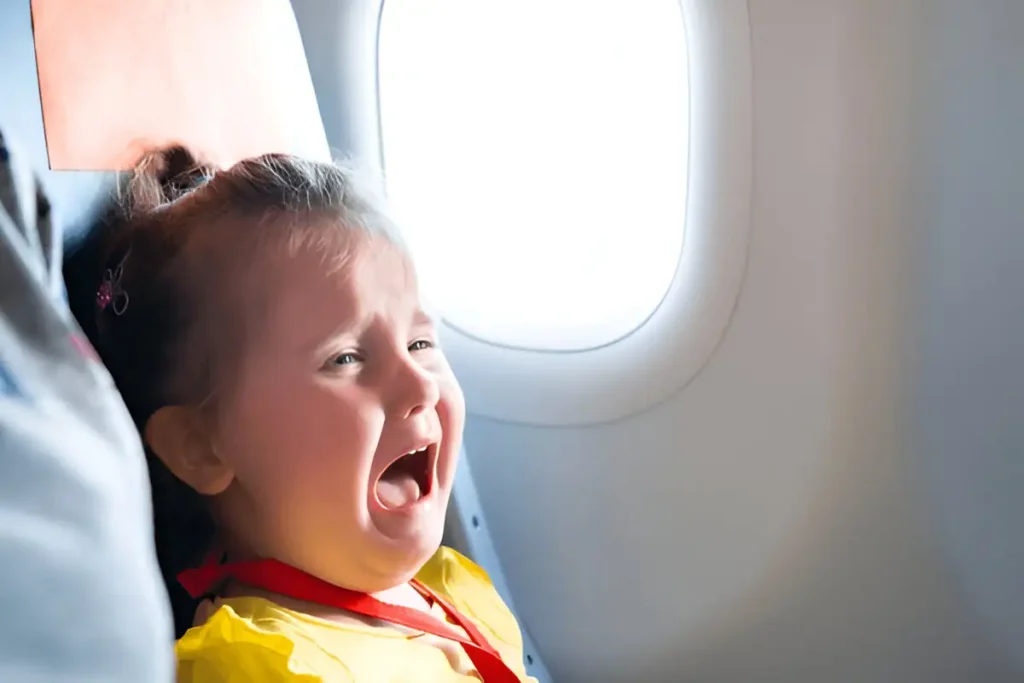
- Packing too much: I understand the need to be prepared, but overpacking can be stressful when traveling. Keep it simple, avoid any gimmicks. Select multi-use items whenever possible to alleviate the load.
- Ignoring Baby’s Routine: Sticking to your baby’s feeding and nap schedule as much as possible will prevent overtiredness and crankiness. Try to maintain familiar sleep cues, such as a favorite blanket or lullaby, even when in a different time zone.
- Skipping Travel Insurance: Unexpected cancellations, medical crises, or lost bags can be expensive. With travel insurance, you can travel with peace of mind knowing that you are financially protected against unforeseen events. Seek a policy that covers care of infants.
- Not Checking Hotel Amenities: Ensure your accommodation provides cribs, high chairs, and baby-friendly facilities to make your stay more comfortable. You can save you from lugging around unnecessary stuff and make sure the place is baby-friendly.
6. Best Airlines for Traveling with a Baby
Certain airlines are more welcoming to parents traveling with infants. Look out for these baby-friendly services while booking for flights:
Emirates: Offers baby bassinets, diaper-changing facilities, and baby food.
Singapore Airlines: Provides bassinets, baby meals, and activity packs.
Qatar Airways: Known for excellent baby amenities and priority boarding for families.
British Airways: Offers pre-reserved bassinets and onboard baby food.
Delta Airlines: Delta Airlines provides Early boarding and assistance for parents flying with an infant.
7. Best way to travel with a baby on a plane: Final tips for a smooth journey
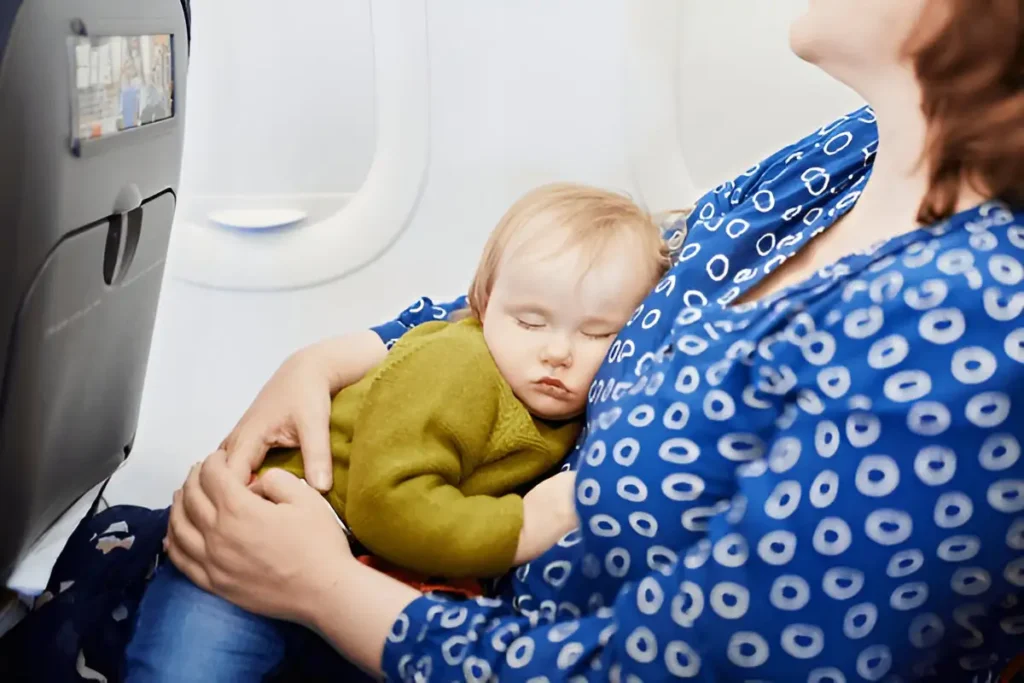
- Stay calm and flexible: Babies can sense stress, so keeping a relaxed attitude helps.
- Engage with fellow passengers: A friendly smile can go a long way in case your baby gets fussy. Many travelers are understanding and helpful.
- Prepare for time zone changes: If you are traveling internationally, you can help your baby’s schedule be gradually more accommodating during your travels by adjusting the schedule a little each day ahead of departure.
- Use infant noise-canceling headphones: If your little one is easily disturbed by noise, there are special baby earmuffs designed that will help drown out engine and cabin noise.
Plan for transit time: If you have layovers, choose airports with baby-friendly amenities, including play areas and nursing rooms.
Stay positive: There are bound to be delays and unexpected challenges, but keeping to the positives will help you make the most of your journey.
Conclusion
The best way to travel with a baby on a plane is to plan ahead, pack smart, and stay adaptable. Flying with a baby doesn’t have to be stressful. By preparing in advance and following these practical tips, you can make this special day one that you and your child will enjoy. Knowing this ahead of time, however, with the right mindset and strategies, your trip can be a memorable adventure, not stress and ordeal.
Traveling with a baby is the chance to make amazing memories together as a family. With some advance planning and adaptability, it is possible to make the experience more enjoyable for everyone involved.
Read More: Is Qatar Airways a Good Airline for Your Next Trip?

